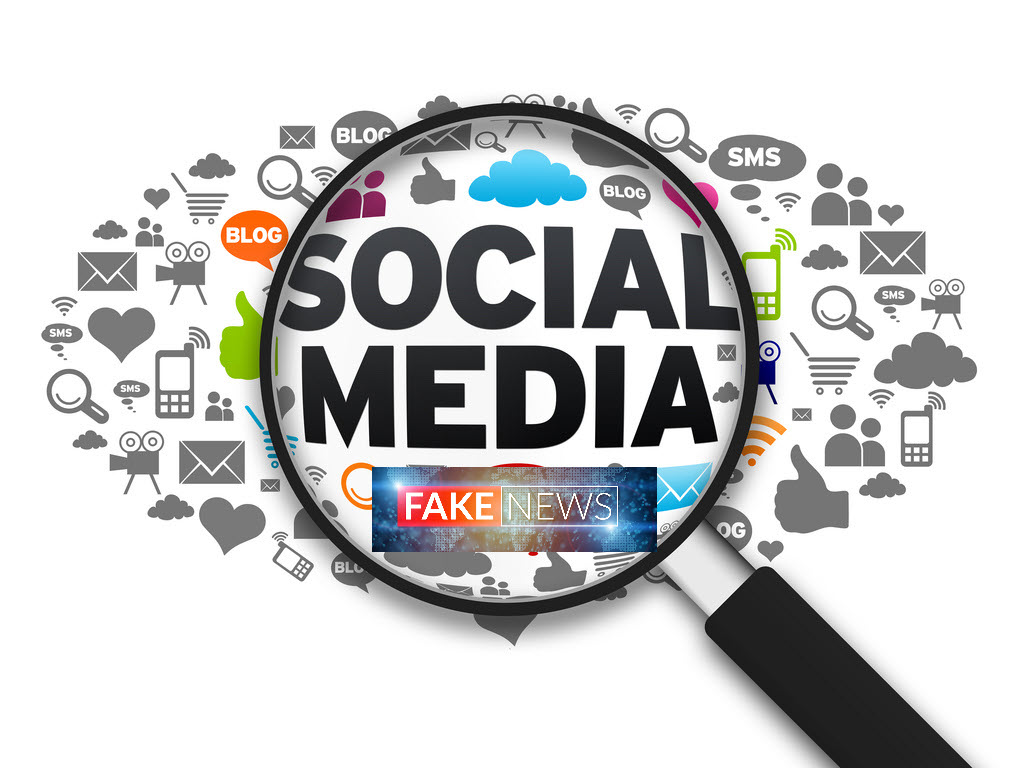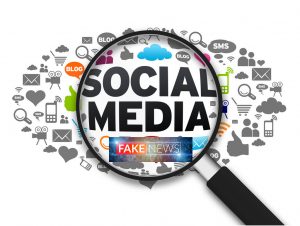
This paper goes through the increasingly controversial issue of the exploitation of social media to spread fake news. It shows an elaborate method used by fake news peddlers to reach out to users. It discusses the eminent dangers of fake news and propaganda stories. Lastly, it highlights actions that governments, social media companies and users can take to curb the spread of fake news.
INTRODUCTION
Fake news and stories have become a new security concern on social media. Social media networks have increasingly been abused and weaponized to facilitate the spread of false news. This has been intended to bring about a certain effect on the audience. Propaganda and false stories for personal interest have been used for centuries. Social media has only brought a new means of spreading these false stories to a broader audience in a faster manner. This research paper will go through the ways in which social media delivers false information to the masses. It will also go through the ways through which governments, social media users, and social media companies can mitigate this.
DISCUSSION
Fake news and propaganda stories have been witnessed in many countries, especially during periods surrounding elections. Some countries have had to ban social media during these tumultuous times. A good example occurred during the 201? Arab spring, where most of the uproar was originating from Twitter and not the average person in the street. There are two main ways through which fake news are being spread.
These are:
A. The scrupulous process
A close investigation shows that the process of spreading fake news is at times meticulously planned and well-funded. The spread of fake news and stories is often a three-phase process. Each of them serves a purpose in weaponizing social media to spread fake news and attack anyone that may counter them.
The first phase involves the acquisition of tools and channels that will be used to spread fake stories and
Propaganda. There is a wide variety of these available to those that want to start propaganda and false news channels. There is the option of opening a social media account and paying for likes and followers.2 There is also the option of paying for unusual services such as the stuffing of polls conducted on social media.
In either case, one will acquire a tool or technique that can be used to push propaganda stories. Twitter is one of the commonly used platforms for fake news since it is easier to get the news across when related issues are trending. At the end of the first phase, one will have created a celebrity with a following of at least 300,000 people.
The next phase involves the preparation of a protest group. It begins with the creation of social media groups, around twenty, and then populating each of them with over a thousand members. Facebook is the best platform to use for this phase as it has the best group functionality. After this, one needs to start facilitating members and followers with materials to share.
Targets are set for the number of Twitter retweets and Facebook likes that are needed for any material posted is quickly pushed up the news feeds of other users2. The target could be 50,000 retweets and twice as many likes. The last act in this phase is to fund the followers and members to be able to participate in a protest. A successful stage-managed protest on social media could take up as much as $200,000. This allows malicious people to pay keyboard warriors to push the stories and strongly condemn the legitimate channels that convey the correct news and stories. If not controlled, the fake news could to the extent of destabilizing countries.
B. The independent mongers
Apart from the commercial and more motivated means of spreading the fake news discussed, some people convey the same news independently. There are people that open parody social media accounts using the names of influential people in a country and use it to spread lies. Other users create dummy accounts purposefully to be used for either trolling or spreading fake news. There are those that create fake stories
with links to their blogs in order to get free traffic. In all these cases, they are as guilty as the first group of fake newsmongers. Their difference is that the second group of people spread the fake news just in the hopes of going viral for the fun of it.
DANGERS OF FAKE NEWS
Social media networks have become the common way through which many people source their information. Consequently, they have become the main way these people form their opinions. The exploitation of social media to spread fake news, whether created for fun or for sinister motives, is dangerous. They breed fear and anger in social media users.

They can mislead users about the actions carried out by the government, institutions, and individuals. They can be instrumentalized to bring otherwise peaceful people can be brought to the brink of war. They can cause people to commit to a misguided cause due to unsubstantiated fears. Fake news mostly touches on sensitive topics and during certain heated periods. Fake stories and propaganda can also be used in
elections to discredit a competitor or to give another some political mileage.
Once they are shared a number of times by people and go viral, they are believed to be truthful. They can hurt the image of a politician within minutes, yet it can take as much as a year for the falsely discredited politician to clear their name.
SOLUTIONS TO THE PROBLEM
There are a few things that governments, social media companies, and users could use in order to curb the spread of fake news. Governments should enact legislations to punish those that are found to be authoring and sharing fake new.The legislation should be harsh to psychologically deter people from using social media to spread fake news. A small action such as retweeting or sharing links to fake stories should also be punishable.

Governments have resources to track down people that spread fake news and with a few arrests, people would be more careful with what they post or share. Social media companies also have a moral duty to stop the virality of fake news. The same algorithms that they use to make a topic or post go viral can be tweaked to go through a process of verification. Networks such as YouTube have methods for checking copyrighted material. Facebook and Twitter have mechanisms for checking illicit material. They should develop mechanisms for checking fake news and punishing accounts that are found to spread them.
Lastly, users have the responsibility of verifying all that they read on social media before re-sharing it. They also have the responsibility of challenging people that spread fake news.
CONCLUSION
The paper has discussed an elaborate scheme used to spread fake news. The scheme has three phases and includes the use of money to stage-manage protests on social media. It has also gone through less elaborate ways through which normal users share the fake news. The dangerous impacts of this new type of exploitation of social media have been discussed and they are far-reaching, even at times pushing people to the brink of war. The paper has recommended solutions that the government, social media companies, and users should implement to curb the spread of fake news. The biggest burden should, however, be borne by the social media companies. They must develop algorithms to detect fake news and prevent them from going viral. It is a problem that they have been created due to their prioritization of virality over veracity.
to read more articles related to privacy, click here
References
- Charles Sturt University Book of Short papers
 Charles Sturt University Book of Short papers
Charles Sturt University Book of Short papers
- Reference 1
- Fact Check
- Election,”The Journal of Economic Perspectives, vol. 31, (2), pp. 211- 236, 2017. Available: https://search.proquest.com/docview/1894464021.
DOI: http://dx.doi.org/10.1257/jep.31.2.211 - S. Seidenberg, “Lies and Libel,” ABA Journal, pp. 48-55, 2017. Available: https://search.proquest.com/docview/1923707479
- K. Kiplinger, “How Can We Discourage Bogus News Stories?” Kiplinger’s Personal Finance, pp. 1, 2017. Available:
https://search.proquest.com/docview/1857348983
Keywords
fake news in social media article – effect of fake news on social media pdf – fake news on social media research – what roles do social media play in spreading fake news – fake news in social media research paper










